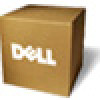Dell PowerVault 700N Dell PowerVault NAS Solution iSCSI Deployment Guide - Page 52
Network Discovery or File Sharing is enabled on Initiator and Target
 |
View all Dell PowerVault 700N manuals
Add to My Manuals
Save this manual to your list of manuals |
Page 52 highlights
The wizard was unable to import one or more virtual disks. Make sure that the files are not in use, and then run the wizard again. • Initiator fails to discover a Target using the DNS domain name- When configuring Initiator access to an iSCSI Target, IQNs are the preferred method and work regardless of DNS configuration. The option of specifying a DNS domain name is built into the Microsoft iSCSI Software Target snap-in. If you prefer to use DNS names, ensure that DNS is configured correctly (including forward and reverse lookup zones) and specify the fully qualified domain name (FQDN) of the Initiator. If you have difficulty in connecting the Target to the Initiator after specifying the Initiator FQDN, run the following command on the target server to check that DNS reverse lookup is enabled correctly: nslookup where is the IP address of the iSCSI Initiator. If the nslookup command fails, it indicates that DNS reverse lookup is not configured. Reconfigure the Target to use the Initiator IQN, IP address, or MAC address. Alternatively, you can use a NetBIOS name to connect the Initiator, fulfilling the following conditions: - No DNS reverse lookup zones are configured for the subnet used by the Target. - Network Discovery or File Sharing is enabled on Initiator and Target servers. • Shadow copies of local-mounted volumes-It is recommended that you do not make shadow copies of local-mounted volumes. When you locally mount a virtual disk and then try to make a shadow copy of that volume using Windows Explorer, the storage appliance appears to hang. This is because of the way shadow copies are created. When you make a shadow copy of a locally mounted virtual disk, the local mount driver writes to the underlying volume hosting the virtual disk. This causes an additional write to the differencing area on the host volume. The result is a circular series of writes that eventually cause the storage appliance to stop responding. If you encounter this scenario, restart the storage appliance. • Initiator fails to restore a lost connection-The Initiator may fail to restore a lost connection due to bad IP addresses. In some cases where the iSCSI Initiator loses communication with Microsoft iSCSI Software Target, the Initiator may appear to hang while reconnecting. This issue occurs if the 52 Appendix














